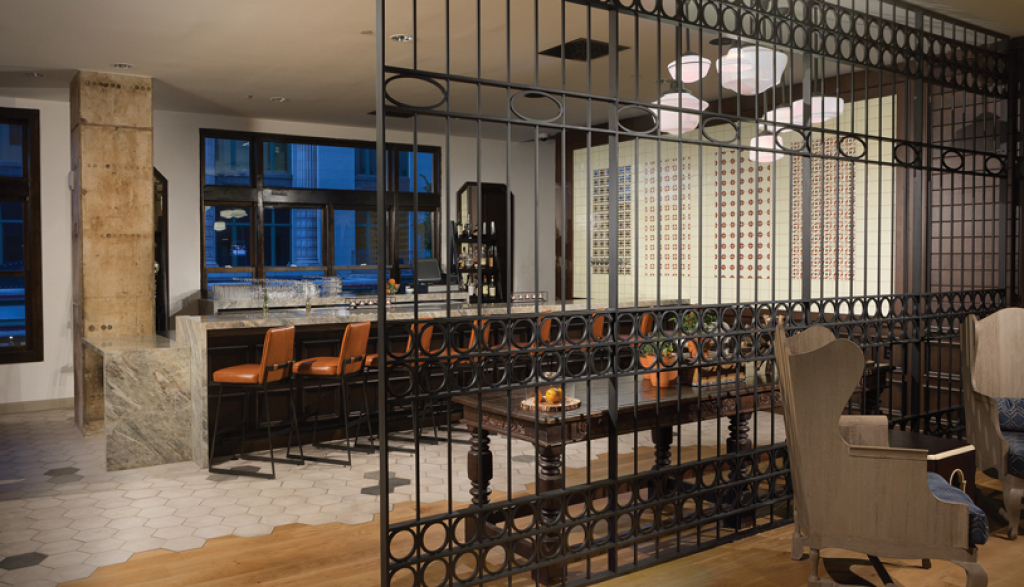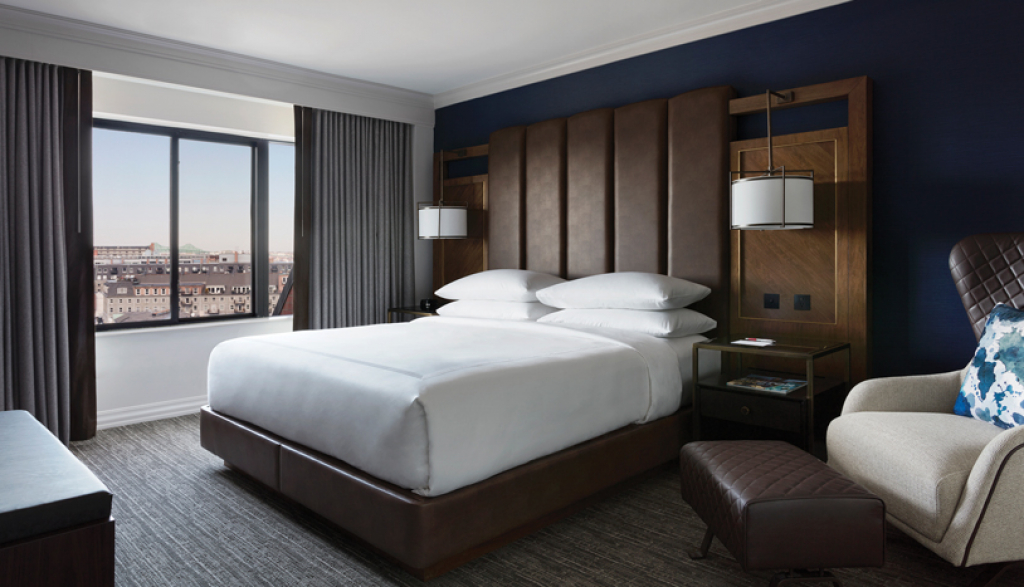Renew & Refresh: Renovating in the Hospitality Sector

Hotels aren’t just a place to sleep. They reflect and contribute to the cultural fabric of their city—sometimes even help define it. But as increased competition, online reviews, and public expectations change, hotels must keep up.
“Hotels typically have a 5-to-10-year lifecycle,” says Mark Jones, Structure Tone Southwest (STSW) vice president. “Even the coolest or most historic hotels must stay fresh. They can’t compete on legacy alone.”
In San Antonio, Jones and his team have been working with Hotel Valencia Riverwalk for nearly a decade to do just that. Already one of the more popular hotels in the city, by 2010, its aesthetic and amenities were growing outdated. STSW helped them start small with some restroom renovations, which, over time, led to everything from the guest rooms and corridors to the lobby, bars, and restaurants.
Across the country, iconic hotels in Boston have been experiencing the same cycle of improvements as competition increases.
“Much of the development happening in Boston right now includes a hotel element,” says Michael Simonelli, director of account executives for Structure Tone Boston. “That puts some pressure on existing hotels to pull the trigger on renovations and upgrades.”
The Structure Tone Boston team has helped several hotelsGo to https://stobuildinggroup.com/sectors/hospitality/ with that evolution in the last few years, including a major renovation at the Boston Marriott Long Wharf. Along with design partners Signature Architects and Looney & Associates, the team helped the waterfront hotel upgrade such areas as the guest rooms and suites, lobby, and two-story M Club Lounge.

This cycle of renewal brings with it a unique set of design and construction challenges.
Time. Schedule is everything for hotel renovations—when rooms are out of service, their revenue stream is significantly affected. In San Antonio, the team renovated over 200 rooms at Hotel Valencia, starting from the top and moving down, one floor a week. “We started on Monday morning and by Friday at noon, we would turn the floor back over,” says Zeke Jones, STSW superintendent. “We added more man hours as needed to make sure that floor was ready for the guests they booked for the weekend.”
And the rooms aren’t the only element on the wire, says Simonelli. “Once that completion date is identified, the sales department is all over it, booking weddings, business meetings, and other events,” he says. “They depend on that date.”
Occupancy. Hotels do not typically close for renovations, so working around the people coming and going—not to mention sleeping—is a challenge. At Hotel Valencia, the STSW team kept a separate lobby space open and available throughout construction by shoring up the construction areas with Masonite and finishing the lobby-facing side of the wall. “We made it look like a finished space to keep the feel of the lobby while safely separating the public from the construction areas,” says Zeke Jones.
Another complicating factor is the “no construction” clause many hotel clients write into event contracts, which require construction to cease if it’s negatively affecting the event. “Often those events are not yet booked when the construction schedule is created,” says Stephen Preble, founding partner at Signature Architects, who specialize in hospitality. “For the month of June, I think we had seven or eight days to perform noisy work. The rest of the month were quiet days due to meetings.“
Finishes. Hotels rely on striking finishes to create their desired look and feel, which means the materials packages are often large and diverse. At Hotel Valencia, the “Old World,” Spanish aesthetic meant a number of materials were sourced from Europe.
We started planning months in advance for all of those speciality items”. says Zeke Jone. “the client and design team are very well organized so they made it easy to strt work on schedule”.
The urban, waterfront location of the Marriott posed a related challenge—space, says Structure Tone project executive, James Custodio. “We had no storage space at the site, so we used a ‘just-in-time’ approach to make sure materials were delivered just as we needed them for each phase.
With so many unique challenges to manage, hotel renovations typically involve the same key players—which eliminates much of the learning curve.
“Our partnership with the hotel, with the design team, and our consistent team of subs has made all the difference,” says Mark Jones. “That collaboration has made the projects successful.”
Preble agrees. “One of the things I like most about the hospitality sector is working with the same teams over and over again,” he says. “We know each other and can reference how we handled an issue together in the past.”
Hotel Valencia Project Details
Project Details
Client: Valencia Group
Architect: Rottet Studio/Sixthriver
Engineer: MS2 Consulting Engineers
Sector: Hospitality
Project Highlights
- Completed a floor of guest rooms a week.
- Integrated dozens of different materials.
- Incorporates 100+ glass oranges signed by celebrities.
Marriott Long Wharf Project Details
Project Details
Client: Sunstone Hotel Investors
Architect: B Signature Architects/Looney & Associates
Engineer: W BLW Engineers, Inc.
Sector: Hospitality
Project Highlights
- Renovated 412 guest rooms & created 3 more.
- Relocated plumbing for 60% of rooms.
- Completed punchlist process in 3-4 days per chase.
- Constructed an all-new, 2-story M Club Lounge.
